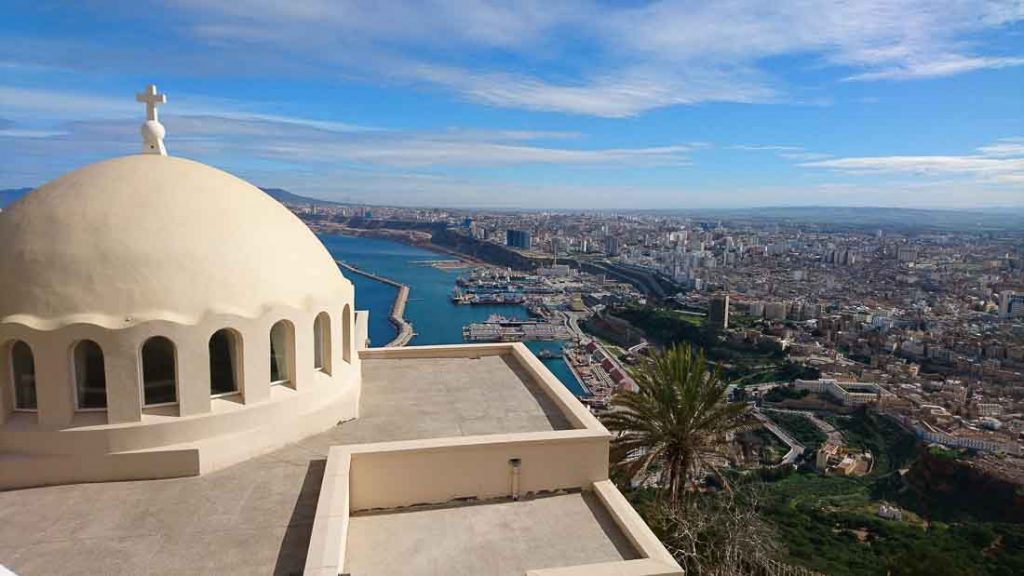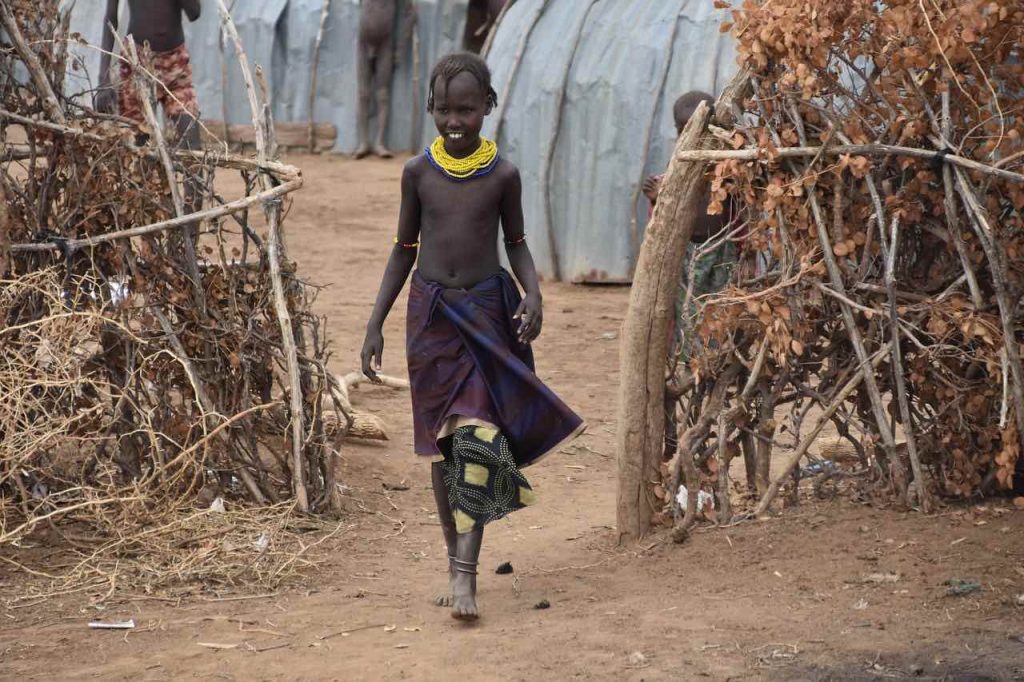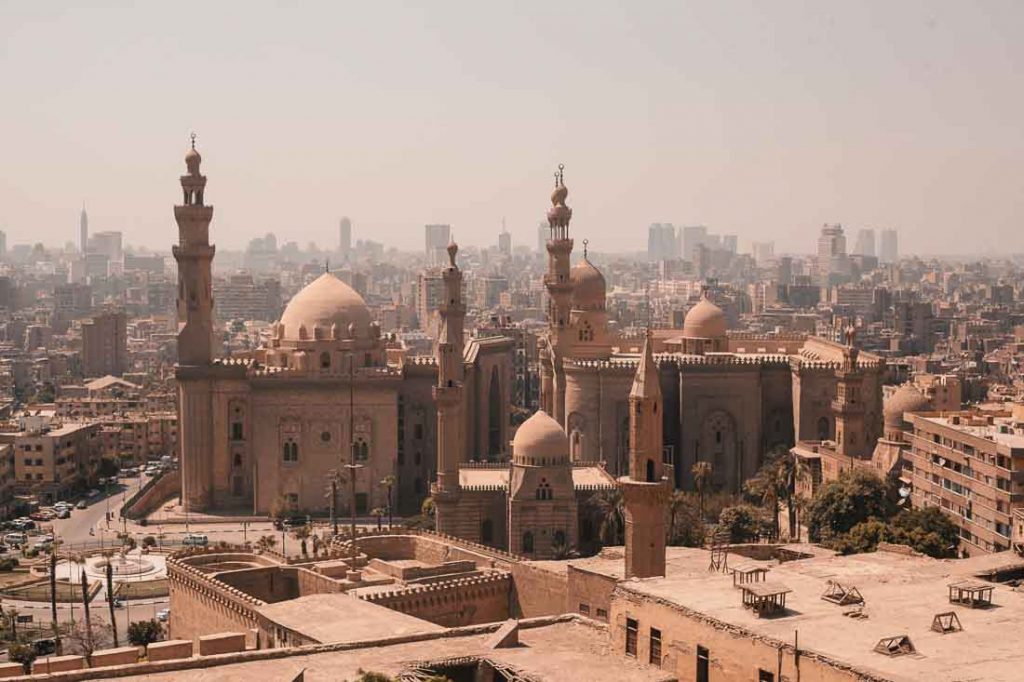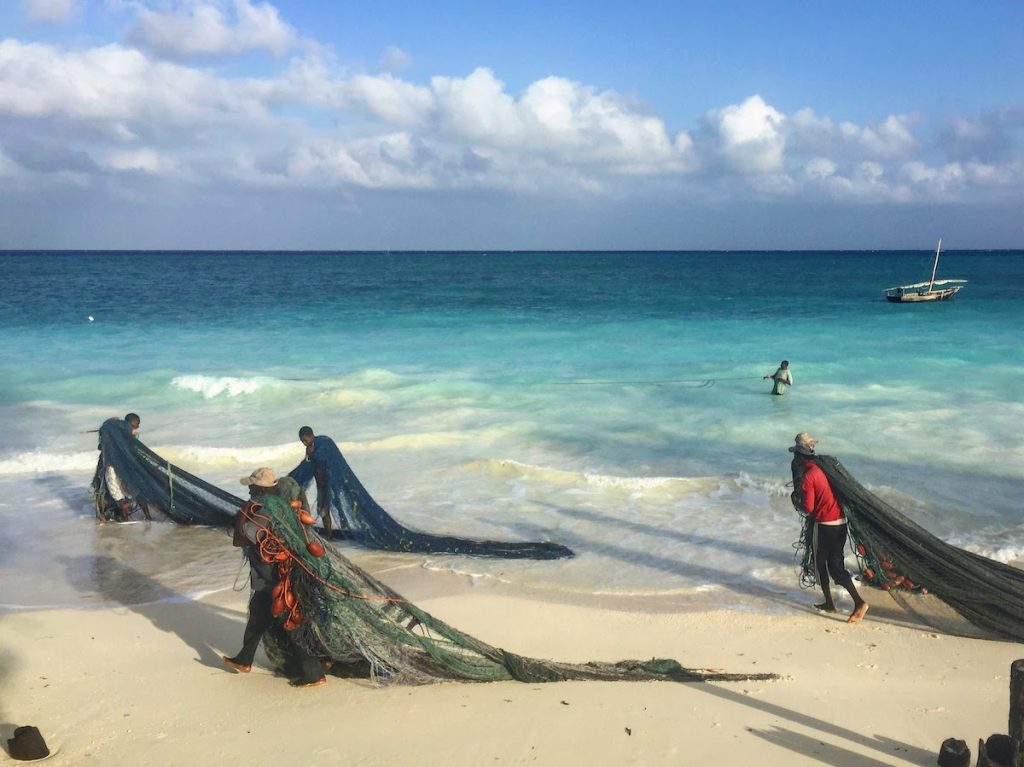Africa is a continent that is rich in natural resources and home to over 1.2 billion people. With a total area of over 30 million square kilometres, is the second-largest continent in the world (after Asia), covering over 30% of the world’s land area. Africa has 54 countries and 10 non-sovereign territories. Each country has its own unique culture, traditions, and customs – some even more so than others! But how do you know which African country is the largest? Well, this blog post will answer that question for you!
And if you want to learn about the smallest country in Africa, read our other post.

What are the 10 largest countries in Africa by geographical area?
1 Algeria 2,381,741 km2 (919,595 sq mi)
Algeria (located in North Africa) is the largest country in Africa, with an area of 2,381,741 km2 and the tenth-largest in the world.
Algeria has few natural resources due to its geographic location and barren desert terrain. 90% of the country takes the Sahara desert, which is the third-largest desert in the world, and people inhabit only 12%.

What to see in the Largest country in Africa Algeria?
Algiers the capital of Algeria has a population of over three million. It is the largest city in Algeria and, with its rich history and architecture, Algiers is worth visiting.
Constantine, the largest city before Algiers, is a historic town with Roman ruins and beautiful sand dunes. It’s also famous for its history of Christianity in North Africa
If you like beaches, head to Sidi Fredj which has miles of golden-white sandy coastline on Algeria’s Mediterranean coast.
Djanet (or Dzjen et) is a town that attracts tourists who love safari and adventure. Djanet has some of the largest sand dunes in the Sahara Desert, called Erg Iguidi
If you want to visit a city with prominent Islamic architecture, head over to Ouled Djerir which was established by Berber tribes during the Arab conquest. It
Algeria also has many beaches that are great for surfing or swimming on hot days.
2 Democratic Republic of the Congo 2,344,858 km2 (905,355 sq mi)
The Democratic Republic of the Congo is Africa’s second-largest African country. It sits on the South-east side of the Congo River and borders the Republic of Congo. Kinshasa is the country’s main port, situated northeast of the Congolese River and on the French border with Africa’s most populous neighbour, the Congo River. This Central African country has its tropical climate at and near the equator. On June 30, 1960, the Republic declared its independence from the French-controlled Congo to secure its sovereignty.
What to see in DR of Congo?
The Democratic Republic of Congo is a country that has many natural resources, including gold, diamonds, and cobalt. It’s also known for being the largest producer of copper in Africa.
Kinshasa is the largest city in DRC with a population of over 10 million people. There are many sites to see while you’re there:
The Cité des images is a museum of photojournalism and photography that was set up by Jacques Langevin. It also features paintings by Congolese artists and an excellent selection of books on African history and culture.
Le Palais du Peuple is the largest neo-classical building in Africa which was originally designed as the headquarters for President Joseph-Désiré Mobutu Sese Seko.
If you’d like some beach time, head to the largest beach in Kinshasa – Loleza Beach.
3 Sudan 1,861,484 km2 (718,723 sq mi)
Sudan is the third-largest country in Africa by area with an approximate total of two million square kilometers. It’s also home to some of Africa’s natural resources like gold, copper, and oil which are exploited for export from Port Sudan (the largest port). This African country has a tropical climate that transitions into desert biomes at its southern
Sudan is a country in Africa which borders South Sudan, Ethiopia and Eritrea. Sudan is the third biggest country in Africa. The largest city in the country is Khartoum, with an estimated population of around two million people.
What to see in Sudan?
The Sudanese capital, Khartoum, is a popular destination for visitors. The city contains many historical landmarks, such as the Blue Mosque, Al-Sayyid Ahmad Shrine and the Khartoum Citadel. These sites are also notable for their long histories of religious tolerance among different faiths.
4 Libya 1,759,540 km2 (679,362 sq mi)
Libya is a country in North Africa. Most of the country is taken by the Sahara Desert. The majority of its population lived along the coast and near Tripoli.
Libya has borders with Egypt, Chad and Sudan.
Libya is made up of three historical regions (Tripolitania, Cyrenaica and Fezzan) that were unified to form a single Italian colony which then became independent Libya
Libya had limited natural resources and was reliant on imports. The discovery of oil in the 1950s made the country wealthy, leading to a welfare state
What to see in Libya?
- The coast is a popular tourist destination.
- Historic cities of Tripoli and Benghazi
- The Sahara Desert is the largest hot desert in the world. There are also many oases where vegetation flourishes because they have irrigation from springs or wells that depend on rainfall downstream or groundwater sources.
- Leptis Magna – largest Roman ruins in Africa
- The Sahara is the largest desert on Earth. Almost all of Libya’s territory consists of arid land and sand dunes, with some salt-coated coastal plains near the Mediterranean Sea that are sparsely populated.
5 Chad 1,284,000 km2 (495,755 sq mi)
Chad is the fifth-biggest African country located in north-central Africa.
Six countries landlock chad, Sudan to the north, Libya to the west, Niger and Nigeria to the south. Chad is located in central Africa, with a population of 11 million people.
What to see in Chad?
- Lake Chad is the largest lake on Earth (though shrinking), home to many animals like hippos and giraffes!
- The national parks are an amazing place to go if you’re looking for a cultural experience. Lots of animals and beautiful scenery!
6 Niger 1,267,000 km2 (489,191 sq mi)
Niger is a country in West Africa. Niger borders seven other countries: Nigeria, Benin, Burkina Faso, Mali, Algeria, Libya and Chad. Niger’s population is split among urban dwellers and farmers.
What to see in Niger?
Niger has been long-famous for its natural beauty. There are several landmarks that attract tourists from all over the world, such as the Niger River, the largest and longest river in West Africa, Zinder, the largest city of the Sahara, and Niamey, the capital of Niger.
One of Niger’s many landmarks is the country’s largest city: Zinder.
National Parks – there are 8 national parks in Niger including the great Kouré Giraffe Reserve and
7 Angola 1,246,700 km2 (481,354 sq mi)
Angola is a country in Africa with borders with six other countries. These are Botswana, Zambia, Namibia, Congo (Kinshasa), Republic of the Congo and DR Congo. Its population is split among urban dwellers and farmers.
Angola has vast natural resources like oil, diamonds and coal. The largest city in the country is Luanda with a population of around five million people.
What to see in Angola?
Luanda is the largest city in Angola, with a population of around 5 million people. It is the largest city in what has been called “Southern Africa’s largest metropolitan area” and it is also the largest Portuguese-speaking African city. The port in Luanda provides important logistical support for the country.
Kalandula falls – one of the largest waterfalls in Africa
Kissama National Park, located approx 75 km from Launda, is a perfect place for Safari enthusiasts.
Angola also has significant agricultural production, with coffee as its main cash crop for export. Food security remains a major issue for many people in the country.
8 Mali 1,240,192 km2 (478,841 sq mi)
Mali is an area in Africa, and it has a border with six other countries. These are Botswana, Zambia, Namibia, Congo (Kinshasa), Republic of the Congo and DR Congo. The population is split among urban dwellers and farmers.
Mali is made up of five regions: Gao, Timbuktu, Kidal, Mopti and Ségou. It has a largely desert climate and a mostly Muslim population.
What to see in Mali?
Mali has many tourist attractions to offer. The largest city in Mali is Timbuktu and is home to the largest mosque in the world, which was named by UNESCO as a World Heritage site in 1988. Timbuktu’s landmarks also include the Djingareyber Mosque and the Sidi Yahya Mosque. Timbuktu is an ancient region of Mali that attracts tourists all over the world.
Timbuktu’s landmarks also include the Djingareyber Mosque and the Sidi Yahya Mosque. Timbuktu is an ancient region of Mali that attracts tourists all over the world, but it has been put on a list of endangered heritage sites due to conflicts and desertification.
9 South Africa 1,221,037 km2 (471,445 sq mi)
South Africa is located in southern Africa. It borders Namibia, Botswana, Mozambique, Swaziland, Lesotho and Zimbabwe. Social inequality remains a challenge within this country, and the government has been working to improve this condition by improving infrastructure and providing support through developing social services for the underprivileged.

What to see in South Africa?
Cape Town – one of the best cities in South Africa to visit most popular tourist destinations in southern Africa with world-famous vineyards
Cradle of humanity – lots of ancient fossils found here, which can be seen at museums there in South Africa.
Kruger National Park – largest national park in the world. Lots of animals and wildlife to see!
Kgalagadi Transfrontier Park – largest trans-border conservation area on Earth.
10 Ethiopia 1,104,300 km2 (426,373 sq mi)
Ethiopia is a landlocked country in Africa. Eritrea borders it to the north and northeast, Djibouti and Somalia to the east, Sudan and South Sudan to the west, and Kenya to the south. The country has an area of 1,104000 km2 or 426000 sq miles which means it is the world’s 27th largest nation by landmass and tenth-largest country in Africa. Ethiopia was known as Abyssinia from the 4th century AD until 1885, when it formally became the Christian Kingdom.
Its culture reflects this strong connection with Christianity, with a majority of the people adhering to various denominations of this faith. Ethiopia has large deposits of minerals such as gold, iron ore, copper ore and uranium.

What to see in Ethiopia?
Ethiopia has many tourist attractions to offer. One of the largest waterfalls in Africa is located there, which is the largest on the continent. There are several other impressive waterfalls, as well as lakes and canyons. You will also find more than 3,000 species of animals and plants there so Ethiopia can be classified as a biodiversity hotspot.
The largest town in Ethiopia is Addis Ababa, its political capital. It has a population of about 4 million people and you may want to visit places such as the Addis Ababa Tower which overlooks much of the city.
You may also want to see some of Ethiopia’s historic sites like Tiya where remains of human habitation dating back to 5200 BC have been found.
11 Mauritania 1,030,700 km2 (397,955 sq mi)
Mauretania borders with Western Sahara to the north, Algeria and Mali on its eastern side and Senegal to the south.
The population of Mauritania is estimated to be around 4.5 million people, which amounts to a density of about 3 per km2.
The majority of the population lives in rural areas which have poor access to essential services such as food security and clean water.
Things to see in Mauritania
12 Egypt 1,001,449 km2 (386,662 sq mi) [African portion]
Egypt is located on the Northern coast of Africa. It is bordered by Libya to the west, Sudan on its south and east side and Gaza Strip and Israel in the northeast corner. Egypt is the richest country in Africa
Egypt has a population of 79,512,000 people that account for one-eighth of the largest African countries.
The Nile River flows through Egypt’s long thin shape, which means the majority of the land is desert.
The largest city in Egypt and Africa as well – Cairo. It played an important role in world history.

Things to see in Egypt:
- The Great Pyramid of Giza – largest of the three pyramids in Egypt
- The Sphinx – largest single-stone statue on Earth
13 Tanzania 945,203 km2 (364,945 sq mi)
Tanzania is located in East Africa. It is bordered by Kenya, Uganda and Burundi on its eastern side; Zambia, Malawi and Mozambique to the south-east of Tanzania’s mainland; and by the Indian Ocean to its east and west. Tanzania has a population of 44 million people, which accounts for about one-eighth of Africa’s largest populations.
The majority of its population live in rural areas which have poor access to food security and clean water. The life expectancy in Tanzania is 54 years old, and the top two causes of death are HIV/AIDS and malaria.
Tanzania became a sovereign state in 1968 from the connection of Tanganyika and Zanzibar. It was originally called Tanganyika but later became Tanzania when it merged with the island of Zanzibar in 1964
Things to see in Tanzania
The largest city in Tanzania and Africa is the capital, Dar es Salaam. There are many things to see in this country, such as a national park for wildlife safaris, Ngurdoto Crater Lake National Park, which is one of the largest natural lakes with a surface area of 76 square kilometers (29 sq mi)
Mount Kilimanjaro – measures 5,895 metre is the largest mountain in Africa and the highest in the world free-standing mountain
Zanzibar island
Zanzibar is an island in the Indian Ocean off the coast of Tanzania and has a population of about 500,000 people. It is popular as a tourist destination because it has some of the largest coral reefs in the world and beautiful beaches. The largest city on Zanzibar is named Zanzibar City or “Stone Town” because it’s filled with many old British colonial buildings made out of stones from surrounding villages.
Zanzibar has been part of many foreign powers throughout its history including Omani Arabs, Portuguese, British and Germans. Because of this, Zanzibar has a rich culture that blends Arab and African traditions. Zanzibar is known as a spice island as it has many spices.

14 Nigeria 923,768 km2 (356,669 sq mi)
Nigeria, an African country on the Gulf of Guinea. It borders with Niger, Benin and Chad to the north; Cameroon and the Central African Republic on its south; Ghana, Ivory Coast, Togo and Burkina Faso on its west
As of 2013, there’s a population of 174 million people in Africa’s most populous nation.
Nigeria, an African country on the Gulf of Guinea, has many natural landmarks and wildlife reserves. Protected areas such as Cross River National Park and Yankari National Park have waterfalls, dense rainforest, savanna and rare primate habitats. One of the most recognizable sites is Zuma Rock, a 725m-tall monolith outside the capital of Abuja that’s pictured on the national currency.
What to see in Nigeria?
Zuma Rock is a monolith rock located outside of Abuja. It measures 725 meters and it’s a Nigeria landmark, that’s pictured on the national currency. The largest city in Nigeria and Africa is Lagos which has a population of 18 million people.
There are many things to see in Nigeria, such as medieval stone houses and castles with traditional Nigerian art and crafts, waterfalls, dense rainforest, savanna and rare primate habitats
15 Namibia 825,418 km2 (318,696 sq mi)
Namibia is located in the southern part of Africa, bordered by Angola to the north, South Africa to the south; Botswana and Zimbabwe are on Namibia’s eastern border. With these three countries, Namibia creates quadripoint
A Quadripoint is a region of four countries or cities that intersect at one point.
What to see in Namibia?
Windhoek largest city in this country with 264k people that’s located on Khomas Highland. There are many things to see here like German colonial church – churches were built for German settlers during the time of colonization.
The largest natural reserve of this country is Etosha National Park with the largest concentration of wildlife in Africa including lions, cheetahs and leopards. Parks has large salt pan, grasslands and mountains.
Biggest countries on the African continent
hope you enjoyed reading about the biggest African countries, and it will give you an idea of what to see during your next visit to Africa. These largest countries each have beautiful natural landmarks as well as a rich culture that blends Arab and African traditions. Which one has captured your attention? Let us know in the comments below what it would be like if you visited any of these largest countries in Africa!
United Nations world wars middle africa
Biggest African countries – Pin it for later


Privacy Policy Disclaimer
This website uses affiliate links for income and support.
If you like our website, please consider using these links. You will be directed to the vendor, and we will get a small commission on your purchase price at no increased cost to you.
We have researched facts stated here as far as practicable but please check anything critical before committing your time and money. We do not claim any special knowledge or expertise, and we are not consultants for our readers.